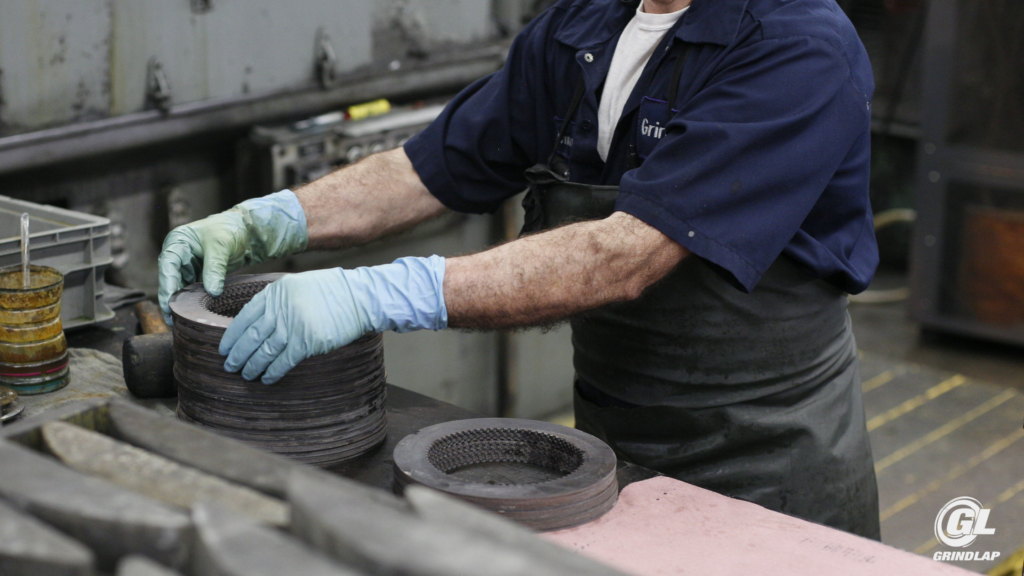Are you navigating the complexities of precision machining processes to achieve flat and parallel surfaces on your parts? Understanding the differences between Blanchard grinding and double disc grinding can be crucial in optimizing your manufacturing processes. Whether you’re aiming to remove substantial material efficiently or require tight parallelism and precise thickness control, choosing the right method can significantly impact your production outcomes.
At Grind Lap, we specialize in precision grinding solutions that cater to diverse manufacturing needs. With a legacy of excellence and innovation, we provide insights into the distinctive capabilities of Blanchard grinding and double disc grinding. Our expertise supports industries such as aerospace, automotive, and medical devices. This underscores our ability to deliver superior surface finishes and dimensional accuracy.
Blanchard grinding and double disc grinding are two precision machining processes. They are used to produce flat and parallel surfaces on a variety of parts. Both methods excel in achieving high-quality surface finishes, yet they differ significantly in their approach and application capabilities.
In this comprehensive guide, we explore the nuanced differences between Blanchard grinding and double disc grinding. Discover how each method leverages unique grinding wheel orientations and capabilities to achieve flatness, parallelism, and surface finish standards. By the end of the article, you’ll have the information you need to select the optimal machining process for your specific requirements.

Blanchard Grinding: Rapid Material Removal
Blanchard grinding utilizes a vertical spindle rotary grinding machine equipped with a flat-bottomed grinding wheel made up of grinding segments. One or more parts sit on a round table and are held in place by an electro-magnet. As the table rotates, this wheel removes material from the surface in a circular motion, resulting in a flat and uniform finish. It is particularly effective for parts requiring substantial material removal quickly and efficiently.
Double Disc Grinding: Precision Parallelism and Thickness Control
Double disc grinding employs two opposing abrasive wheels that simultaneously grind both sides of a flat part. The machine uses a rotating belt or carrier to feed the part between the grinding wheels, ensuring a flat and parallel finish. This method excels in removing stock equally, achieving tight parallelism and precise thickness control, making it ideal for parts requiring exact dimensional specifications.
Key Differences between Blanchard Grinding and Double Disc in Approach and Capability
The primary distinction between Blanchard grinding and double disc grinding is speed and material removal. Double disc grinding processes parts quickly but only removes small amounts of stock per pass. Blanchard grinding can handle irregularly shaped parts and can remove material quickly but is limited by the number of parts that can fit on a table at any one time.
Another significant difference is the range of part thickness each method can effectively process. Blanchard grinding is suitable for parts thicker than 1/8 inch. Whereas double disc grinding can handle parts as thin as 0.010 inch.
Surface Finish and Application Considerations
Both Blanchard grinding and double disc grinding are capable of achieving high-quality surface finishes. However, double disc grinding is often chosen for parts demanding stringent parallelism and thickness uniformity. These include precision automotive components and semiconductor materials.
Choosing the Right Method for Your Needs
Selecting between Blanchard grinding and double disc grinding depends largely on the specific requirements of your parts and the desired outcomes. Here are key considerations to help you make an informed decision:
- Material Thickness and Type:
- Blanchard Grinding: Ideal for parts thicker than 1/8 inch (3.175 mm). It excels in efficiently removing substantial material from large, flat surfaces. Suitable for materials like steel, stainless steel, aluminum and cast iron.
- Double Disc Grinding: Capable of handling thinner parts, as thin as 0.010 inch (0.254 mm). This method is preferred for materials requiring precise thickness control, such as aluminum, copper, titanium and various alloys.
- Surface Finish Requirements:
- Blanchard Grinding: Provides a uniform surface finish across large, flat areas. Surface finishes typically range from coarse to fine, suitable for applications where cosmetic appearance is less critical compared to dimensional accuracy.
- Double Disc Grinding: Offers superior parallelism and surface finish control due to simultaneous grinding of both sides of the part. It is suitable for achieving very tight tolerances and smooth finishes essential in precision engineering and semiconductor industries.
- Dimensional Accuracy and Parallelism:
- Blanchard Grinding: Ensures flatness across the surface but may have slight variations in parallelism compared to double disc grinding. Suitable for applications where exact parallelism is not critical but flatness is essential.
- Double Disc Grinding: Provides excellent parallelism control, ensuring minimal variation in thickness across the part. This method is crucial for parts requiring precise dimensional specifications, such as spacers, washers, and semiconductor wafers.
- Production Efficiency and Throughput:
- Blanchard Grinding: Known for its efficiency in removing material quickly, making it suitable for high-volume production of larger parts with more stock. Ideal for applications where speed and material removal rate are priorities.
- Double Disc Grinding: While slightly slower than Blanchard grinding due to the stock removal rate and setup, it offers enhanced control over surface quality and thickness uniformity, making it indispensable for critical applications.
- Cost Considerations:
- Blanchard Grinding: Generally more cost-effective for parts requiring substantial material removal due to its faster processing times and simpler setup requirements.
- Double Disc Grinding: Often preferred for its precision and ability to handle thinner parts, despite potentially higher setup costs. It can reduce overall costs for larger runs.
- Application-Specific Requirements:
- Consider the specific application requirements such as load-bearing capacities, wear resistance, corrosion resistance, and aesthetic standards when choosing between the two methods.
- Consult with precision machining experts like Grind Lap to assess your part specifications and determine the optimal grinding method based on your unique requirements.
By carefully evaluating these factors—material type and thickness, surface finish needs, dimensional tolerances, production efficiency, cost considerations, and application-specific requirements—you can confidently select either Blanchard grinding or double disc grinding to achieve superior machining outcomes tailored to your specific manufacturing needs.


Recent Comments